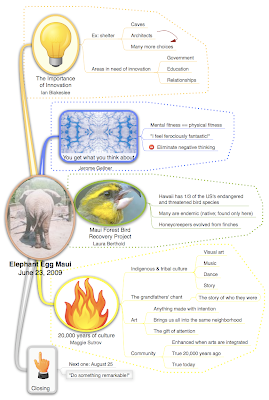New ways of seeing
Storyline threads
My husband has sometimes wished for a way to track characters in a book as he's reading. He often reads several books at a time, so progress through one is slow, and it's easy to lose track of events or who's who. Today he came across an example of one way someone did that for several films (it should work equally well for books, I think). It traces intersecting story threads in a simple but effective way. We've both wondered whether authors use such devices for themselves when plotting a book.
Looking at the top map, for Lord of the Rings, the creators used different colors to represent hobbits, elves, men, and other creatures. Time flows from left to right, and important events and locations, such as Bilbo's party and Isengard, are represented in different places on the map.
It's interesting to compare maps of different stories, on the bottom row. The map of 12 Angry Men shows 12 parallel threads. Without seeing the movie, this is ambiguous, because it could be interpreted either as all interacting together the entire time, or having no interaction. (Adding context, such as an enclosing space labeled "Jury Room", could help.) It looks like Primer would be confusing: Just three characters, whose lives intertwine messily, with no landmark places or times, and whose final fates are unclear! I suppose some lives feel like that at times. (I found out it's about time travel, from this Wikipedia entry.) From xkcd, via Flowing Data.
Evolution of thinking
I have trouble, sometimes, committing myself to a conclusion, because I recognize that my understanding is always evolving as I get more information and consider more points of view. Many scientists and others seeking "truth" can probably relate. The evolution of one scientist's thinking over the course of 13 years is traced in a visualization of changes in six editions of one of his books. With different colors representing each edition, if you let this play out, you see how words are added and removed, and, dramatically, how an entirely new chapter is added. I also discovered that if you hover your cursor over a section, you can read the words, in the color representing the edition in which they were added. The work traced is Charles Darwin's famous On the Origin of Species by Means of Natural Selection, first published in 1859, with the 6th edition published in 1872. From Ben Fry, from this CNN article, "A new way of looking at the world", via Flowing Data.
















